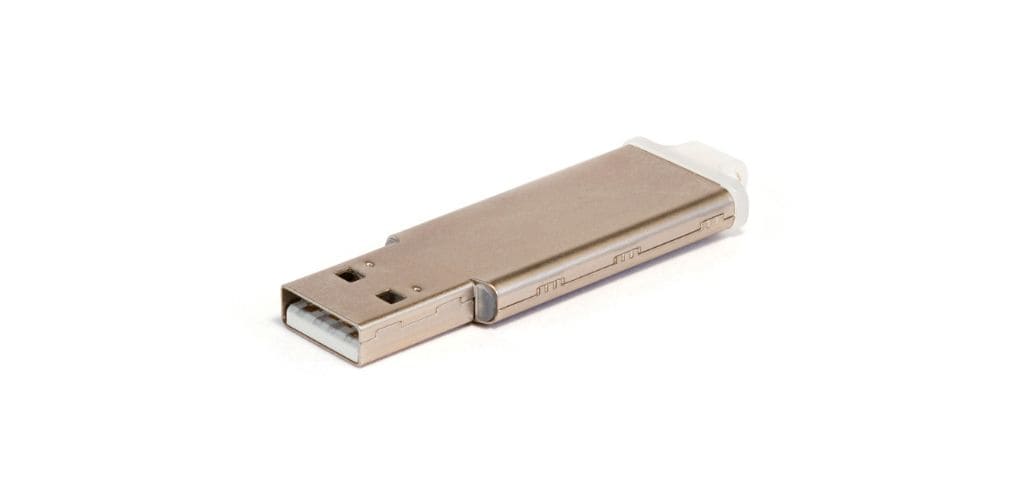The federal circuit has resolved a longstanding split among district courts by ruling that IPR estoppel does not reach system prior art even when evidenced by patents and printed publications.
The case is Ingenico Inc. v. IOENGINE, LLC, No. 23-1367 (Fed. Cir. May 7, 2025).
As the court explained,
The patents-at-issue are directed to a portable device, such as a USB thumb drive, which includes a processor that causes communications to be sent to a network server in response to user interaction with an interface on a terminal.
IN 2018, IOENGINE filed suit alleging that PayPal Holdings, Inc.’s accused products infringed various patents, a subset of which were at issue in this appeal.
Because it supplied PayPal’s accused products, Ingenico filed a declaratory judgment action against IOENGINE.
Before trial, Ingenico filed IPR petitions challenging IOENGINE’s asserted patents, which resulted in final written decisions that held most of the challenged claims of the patents unpatentable.
As the court explained,
At summary judgment, IOENGINE moved to preclude Ingenico from relying on “documentation related to DiskOnKey Upgrade software” under 35 U.S.C. § 315(e)(2) because Ingenico reasonably could have been expected to raise it during the IPR proceedings….. The district court ruled that “Ingenico will be estopped from relying on those documents [to prove invalidity] except to the extent . . . that they form part of a substantively different combination of references that could not reasonably have been raised in the IPRs.”
Under 35 U.S.C. § 315(e)(2),
The petitioner in an inter partes review of a claim in a patent under this chapter that results in a final written decision under section 318(a), or the real party in interest or privy of the petitioner, may not assert either in a civil action arising in whole or in part under section 1338 of title 28 or in a proceeding before the International Trade Commission under section 337 of the Tariff Act of 1930 that the claim is invalid on any ground that the petitioner raised or reasonably could have raised during that inter partes review.
At trial, Ingenico introduced evidence of a prior art USB device known as the DiskOnKey (DiskOnKey Device).
As the federal circuit explained,
The DiskOnKey Device was manufactured and sold in the early 2000s by M-Systems Flash Disk Pioneers Ltd. The DiskOnKey Device was offered with various software applications, including a Firmware Upgrader, and was equipped with capabilities described in a Software Development Kit (together the DiskOnKey System). Ingenico argued that the DiskOnKey System invalidated the asserted claims as anticipated or obvious because it was either “on sale” or “in public use” under 35 U.S.C. § 102(b) (pre-AIA), or “known or used by others . . . before the date of the invention” under 35 U.S.C. § 102(a) (pre-AIA).
The jury returned a verdict finding the claims-at-issue in this appeal were infringed, but invalid as anticipated and obvious.
The federal circuit explained that:
it is not in dispute that a single download of the Firmware Upgrader results in a system that meets the patents-at-issue’s claim requirements. Thus, there is substantial evidence to support the jury’s finding that the DiskOnKey System, including the Firmware Upgrader, was in public use.
On the issue of prior art estoppel and the IPR, the federal circuit held:
IPR estoppel does not preclude a petitioner from asserting the same prior art raised in an IPR in district court, but rather precludes a petitioner from asserting grounds that were raised or reasonably could have been raised during an IPR. The only anticipation and obviousness challenges that a petitioner can make during an IPR are that the claims were patented or described in a printed publication. IPR estoppel precludes these challenges in district court if they were raised or reasonably could have been raised during the IPR. But IPR estoppel does not preclude a petitioner from relying on the same patents and printed publications as evidence in asserting a ground that could not be raised during the IPR, such as that the claimed invention was known or used by others, on sale, or in public use.
Just like the haiku above, we like to keep our posts short and sweet. Hopefully, you found this bite-sized information helpful. If you would like more information, please do not hesitate to contact us here.


